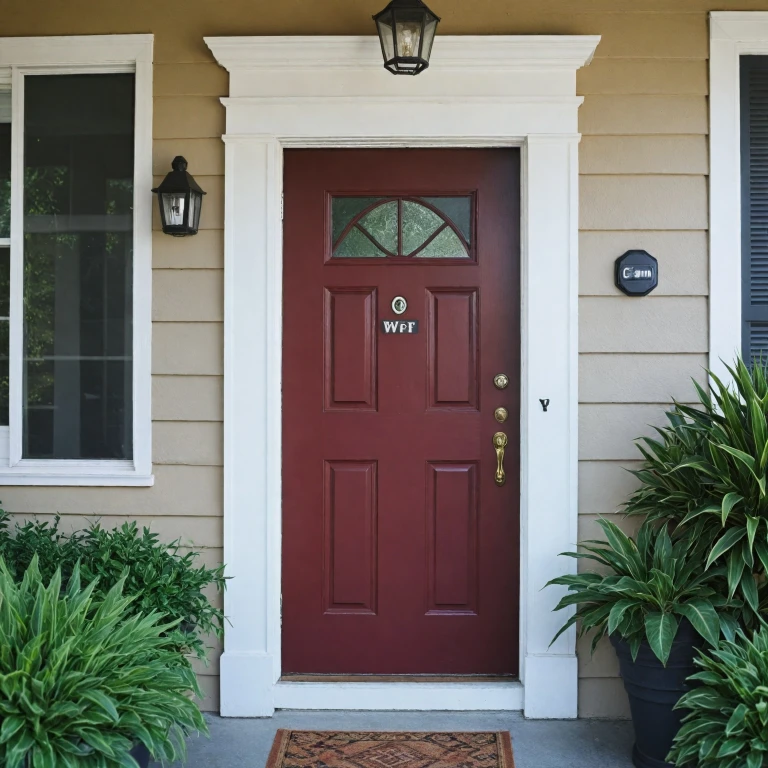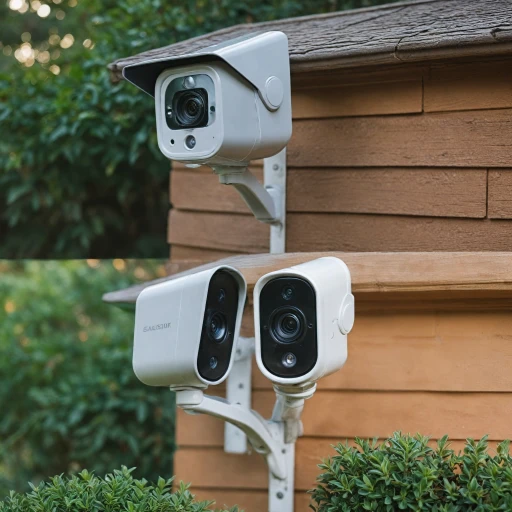Understanding the Importance of Wi-Fi for Your Ring Doorbell
Understanding how your Ring Video Doorbell connects to your Wi-Fi network is crucial for ensuring reliable performance. The Ring doorbell functions by connecting to a Wi-Fi network, which allows it to transmit video and audio feeds to your Ring app. This connection is vital for receiving real-time notifications, accessing live video feeds, and using the two-way audio feature.Why Wi-Fi Matters for Your Ring Video Doorbell
Your video doorbell relies heavily on a stable Wi-Fi connection to function optimally. A weak or unstable network can lead to delayed notifications, video lags, or even issues like when your doorbell won’t connect. Therefore, maintaining strong signal strength is essential. Consider using a mesh system or a Wi-Fi extender if your router is located far from the doorbell to enhance the signal.Key Factors Influencing Wi-Fi Connectivity
Understanding the elements that impact your connection will help in troubleshooting and optimizing performance. Here are some vital points:- Signal Strength: Ensure that the signal between your router and the doorbell is strong. Obstructions like walls can weaken signals, affecting the video feed.
- Router Positioning: Have your router placed in a central location within your home to better serve all connected devices.
- Internet Service Provider: A reliable internet provider guarantees better connectivity and overall performance of your ring device.
Preparing to Change Your Wi-Fi Network
Essential Preparations for Changing Your Network
Before you embark on the process of altering the Wi-Fi network connected to your Ring device, it's crucial to gather all the necessary information and tools. Proper preparation will ensure a smooth transition for your video doorbell.
Firstly, confirm that you have the current Wi-Fi network details and new network credentials ready. This includes both the network name (SSID) and the password. Having these details at your fingertips will streamline the process.
Next, locate your router. Ensure it's operational; if you're using a mesh system or a Wi-Fi extender, note their configurations as well. Understanding how your networks are structured can be immensely helpful.
Ensure your Ring app is installed on your smartphone or tablet and is up to date. The app is pivotal for conducting the change, offering step-by-step guidance at every stage. If the app won’t connect, you might need to reinstall it or check for updates.
Keep your Ring device within range of the Wi-Fi signal. A weak signal strength can lead to the device not connecting or unreliable functionality. If your doorbell Wi-Fi signal is weak, repositioning your router or ring chime to act as a signal booster might be necessary.
Lastly, it’s important to understand the current state of your video doorbell’s health. Within the ring app, you can check the device health settings to identify any potential issues before attempting the Wi-Fi change. This ensures that your device is ready for the transition.
Step-by-Step Guide to Changing Wi-Fi on Your Ring Doorbell
Changing Your Wi-Fi Connection for the Ring Video Doorbell
Switching the Wi-Fi network for your Ring Video Doorbell is crucial, whether you're upgrading your router, moving into a new home, or troubleshooting connectivity issues. This process is straightforward when you follow these steps using the Ring app to ensure your device stays connected and operational.
First, ensure your video doorbell is fully charged or connected to a power source. A charged device ensures uninterrupted feedback during the setup. Once charged, open the Ring app on your smartphone or tablet.
Next, navigate to the Device Health section. Here, you can check the signal strength and specify the overall connectivity health of your Ring device. This step is crucial to ensure that your doorbell will connect to the new wifi network.
To change the network, tap on Change Wi-Fi Network. Follow the prompts to select your new Wi-Fi network from the list of available networks. You will need to enter the password for this network. Your phone or tablet must be connected to the same network you're setting your Ring device on. This thread of actions will also ensure that your Ring Chime and other connected Ring devices seamlessly transition to the new connection.
If there are issues where the doorbell will not connect or the device won’t communicate with the internet, consider placing a Wi-Fi extender or adjusting your router’s position to enhance connectivity. Some users also find integrating a mesh system beneficial for maintaining a stable network.
Once connected, check that your Ring doorbell responds as expected. Test its video feed and other functionalities through the app to confirm a successful reconfiguration. Exploring advanced settings will also help you make the most of your enhanced network connection.
This seamless transition ensures that your Ring doorbell continues to provide robust security for your home, without missing a beat in communicating with your Wi-Fi network.
Troubleshooting Common Issues
Troubleshooting Connectivity Issues
Changing the Wi-Fi network on your Ring Video Doorbell can sometimes lead to connectivity issues. If your device won’t connect to the new network, there are several steps you can take to resolve the problem.
- Check Signal Strength: Ensure that your router is close enough to the doorbell. Weak signal strength can prevent your Ring device from connecting properly. Consider using a Wi-Fi extender or a mesh system to boost the signal.
- Restart Your Router: Sometimes, simply restarting your router can resolve connectivity issues. Unplug the router, wait a minute, and then plug it back in. This can refresh the network and help your Ring device connect.
- Verify Network Credentials: Double-check that you’ve entered the correct Wi-Fi network name and password in the Ring app. A simple typo can prevent your device from connecting.
- Device Health Check: Use the Ring app to check the device health. This feature provides feedback on the connection status and can highlight any issues with the network or the doorbell itself.
- Update the Ring App: Ensure that you are using the latest version of the Ring app. Updates often include bug fixes that can resolve connectivity issues.
- Reset the Ring Device: If all else fails, resetting the Ring doorbell to its factory settings can help. This should be a last resort, as it will require you to set up the device again from scratch.
Addressing Video and Audio Quality Problems
Once your Ring doorbell is connected to the Wi-Fi network, you might encounter issues with video or audio quality. Here are some helpful tips:
- Internet Speed: Ensure your internet service provider offers sufficient speed for video streaming. Slow speeds can cause video lag or poor quality.
- Router Placement: The location of your router can impact video quality. Make sure it’s placed in a central location and not obstructed by walls or furniture.
- Network Traffic: High traffic on your Wi-Fi network can affect performance. Disconnect any unnecessary devices to free up bandwidth for your Ring doorbell.
- Check for Interference: Other electronic devices can interfere with Wi-Fi signals. Keep the router away from microwaves, cordless phones, and other potential sources of interference.
By addressing these common issues, you can ensure your Ring Video Doorbell operates smoothly and provides reliable security for your home.
Enhancing Security with Your Ring Doorbell
Strengthening Security Measures with Your Ring System
The security of your Ring Video Doorbell doesn't just depend on its physical placement or the visual deterrent it provides. Ensuring your network is secure can actually enhance the doorbell's overall protective capabilities. A secure wifi network is paramount. Utilize WPA3 encryption, if available, to bolster your protection over the previously prevalent WPA2 standards. This reduces the risk of unauthorized access.
Consistent password updates and using a password manager to maintain unique and complex passwords are simple but effective strategies. This practice ensures that even if one password is compromised, your other devices remain secure. Additionally, enabling two-factor authentication (2FA) within your Ring app adds an extra layer of security by requiring a second form of verification before accessing your account.
Ensure your internet router’s firmware is consistently updated. These updates often include critical security patches that protect against vulnerabilities identified by manufacturers. If you employ a mesh system, confirm that it's also receiving regular updates for optimal security.
Consider incorporating a wifi extender if your doorbell’s signal strength lacks consistency. Weak signals can be easily disrupted and may lead to dropouts during critical moments. A stable connection not only improves the doorbell’s performance but ensures that any live video streams or alerts are delivered promptly.
Lastly, always review and adjust your privacy settings based on your comfort level with data sharing. Regularly checking these settings allows you to control what information is being shared or stored within the Ring ecosystem. By taking these precautions, your doorbell can continue to safeguard your home effectively, enhancing the peace of mind it provides.
Maintaining Your Ring Doorbell for Optimal Performance
Regular Maintenance for Your Ring Doorbell
To ensure your Ring video doorbell continues to function optimally, regular maintenance is crucial. This involves more than just ensuring a stable wifi network connection. Here are some practical tips to keep your device in top shape:
- Check Device Health: Regularly use the Ring app to check the device health. This feature provides valuable insights into battery levels, signal strength, and other critical parameters.
- Clean the Lens: Dust and debris can accumulate on the camera lens, affecting video quality. Gently clean the lens with a soft cloth to maintain clear video footage.
- Update the Firmware: Keep the device's firmware updated. The Ring app will notify you of any available updates, which often include important security enhancements and bug fixes.
- Inspect the Mounting: Ensure that the doorbell is securely mounted. Loose fittings can affect the device's performance and may lead to false alerts.
- Test the Chime: Regularly test the Ring chime to ensure it is functioning correctly. This can be done easily through the app by tapping on the chime settings.
- Optimize Network Settings: If you notice connectivity issues, consider repositioning your router or using a wifi extender to boost the signal. A strong network connection is vital for real-time video streaming and alerts.
- Monitor Feedback: Pay attention to any feedback from the app regarding connectivity or performance issues. Promptly addressing these can prevent larger problems down the line.
By following these maintenance tips, your Ring device will continue to provide reliable security and peace of mind. Regular upkeep not only enhances performance but also prolongs the lifespan of your doorbell, ensuring you get the most out of your investment.




